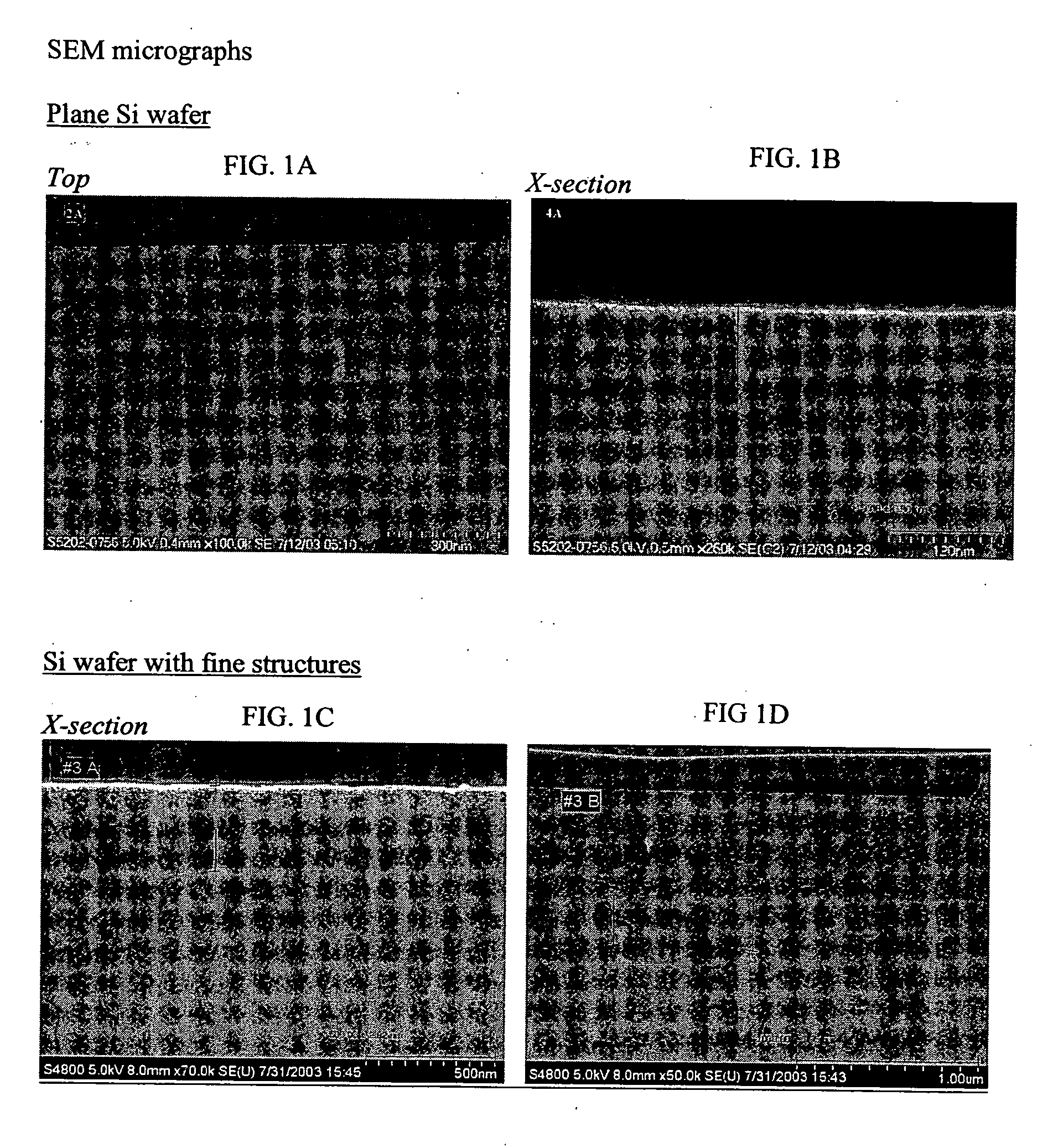Formation of insulator oxide films with acid or base catalyzed hydrolysis of alkoxides in supercritical carbon dioxide
a technology of insulator oxide and supercritical carbon dioxide, which is applied in the direction of resistive material coating, chemical vapor deposition coating, chemical production, etc., can solve the problem of high temperature requirements for chemical vapor deposition, and achieve the effect of rapid deposition of oxide formation
- Summary
- Abstract
- Description
- Claims
- Application Information
AI Technical Summary
Benefits of technology
Problems solved by technology
Method used
Image
Examples
Embodiment Construction
[0020] This invention is an improved method of conducting chemical reactions in supercritical, or near supercritical, carbon dioxide (SCD). In one preferred embodiment, the invention is a method for producing metal or semi-metal oxide deposits by hydrolysis of at least one hydrolysable precursor in supercritical carbon dioxide (SCD). Specifically, the hydrolysis reaction can be catalyzed by the presence of either an acid or a base.
[0021] The hydrolysable precursor is a typically a hydrolysable metallic compound. As used herein, the terms “metal” and “metallic” are to be construed broadly to encompass metals, the semi-metals (also known as metalloids) and phosphorus. The semi-metals are typically considered to be boron, silicon, germanium, arsenic, antimony, tellurium, and polonium.
[0022] The hydrolysable metallic compound precursor must be soluble or partially soluble in supercritical carbon dioxide (SCD). Unlike a normal fluid solvent, SCD has virtually no surface tension. As suc...
PUM
| Property | Measurement | Unit |
|---|---|---|
| Reaction temperature | aaaaa | aaaaa |
| Solubility (mass) | aaaaa | aaaaa |
| Porosity | aaaaa | aaaaa |
Abstract
Description
Claims
Application Information
 Login to View More
Login to View More - R&D
- Intellectual Property
- Life Sciences
- Materials
- Tech Scout
- Unparalleled Data Quality
- Higher Quality Content
- 60% Fewer Hallucinations
Browse by: Latest US Patents, China's latest patents, Technical Efficacy Thesaurus, Application Domain, Technology Topic, Popular Technical Reports.
© 2025 PatSnap. All rights reserved.Legal|Privacy policy|Modern Slavery Act Transparency Statement|Sitemap|About US| Contact US: help@patsnap.com


